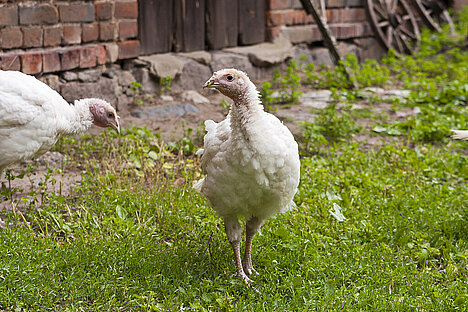Turkey carcass

Turkey carcass is a term that perhaps not every dog owner is familiar with. It refers to the bone structure of a carved turkey, i.e. the ribs, back and neck. These parts still contain meat and skin residues, which are very nutritious for dogs. Turkey carcass can be used as part of a balanced BARF (Biologically Appropriate Raw Food) diet for dogs. In this article you will find out what turkey carcass is, what its advantages and disadvantages are and how you can feed it to your dog.
What is turkey carcass?
Turkey carcass is the carcass of a turkey that remains after the breast and leg meat has been removed. It consists of the ribs, back and neck of the turkey. These parts still contain meat and skin residues, which are rich in protein, fat and minerals. Turkey carcass is a by-product of the poultry industry that is often sold as animal feed. It can be bought fresh or frozen.
What are the benefits of turkey carcass for dogs?
Turkey carcass has several benefits for dogs on a BARF diet. Firstly, it provides valuable nutrients such as protein, fat, calcium, phosphorus and iron. These are important for muscle development, bone strength and blood formation in dogs. On the other hand, turkey carcass provides a natural tooth cleaning for the dog. Chewing the bones removes plaque and tartar and massages the gums. Turkey carcass also aids the dog's digestion as it contains fiber and stimulates the intestines.
What are the disadvantages of turkey carcass for dogs?
Turkey carcass also has some disadvantages for dogs that should be considered. For one thing, turkey carcass can contain bacteria such as salmonella or campylobacter, which can lead to diarrhea or vomiting. For this reason, turkey carcass should always be thoroughly frozen or heated before feeding it to the dog. Secondly, turkey carcass can lead to injuries in the dog's mouth or digestive tract. This can happen if the dog swallows pieces of bone that are too large or too sharp or if it has an allergic reaction to poultry. Therefore, turkey carcass should always be fed under supervision and only given in small quantities.
How do you feed turkey carcass to dogs?
Turkey carcass can be fed to dogs as part of a balanced BARF diet. Turkey carcass should make up around 10 to 15 percent of the dog's daily food requirement. The remaining 85 to 90 percent should consist of muscle meat, offal, fruit and vegetables. The exact amount of turkey carcass depends on the dog's size, age and activity level. As a rule of thumb: one gram of bone per kilogram of the dog's body weight per day.
Turkey carcass should always be thoroughly frozen or heated before feeding it to the dog. This kills possible bacteria and makes the meat more durable. Turkey carcass should always be fed under supervision and only given in small pieces. This prevents injury to the dog's mouth or digestive tract.
If you notice any signs of hypersensitivity or poisoning in your dog, you should see your vet immediately. We are not a substitute for a vet, but we try to be as accurate as possible. Every dog reacts differently and we recommend you get a second opinion or consult your vet if in doubt.
Stay healthy and take good care of your four-legged friend!😊